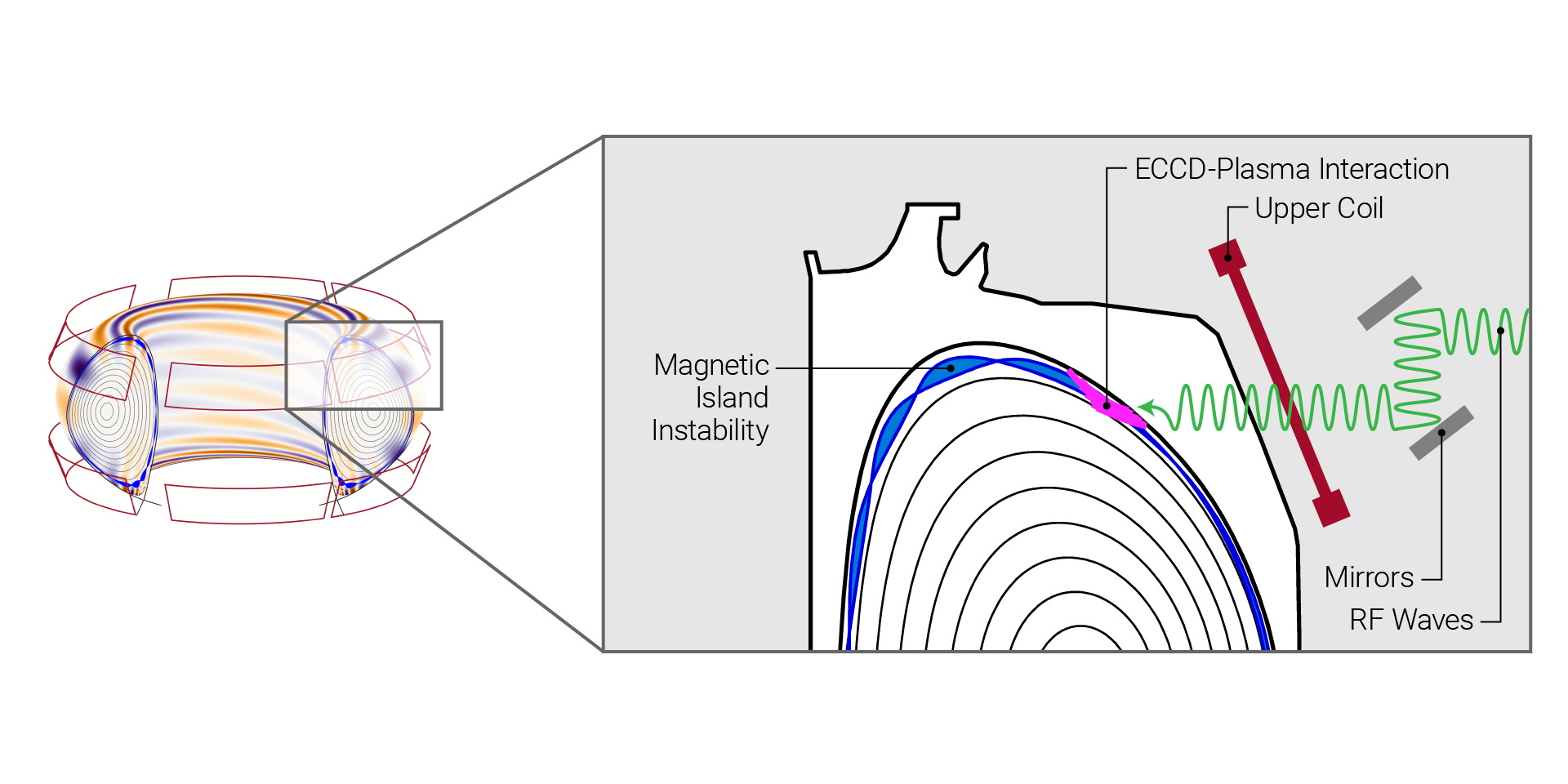The image on the left shows the tokamak and 3D magnetic perturbation generated by 3D coils, with the purple-blue hues representing lower amplitude perturbations and the red representing higher amplitude perturbations. The image on the right is a closer view showing the top half of the tokamak and plasma. The coils are used to generate the magnetic field perturbations that produce the islands (blue). Another coil can also be found on the bottom of the machine. The injection system for the ECCD microwaves is depicted on top (red). These can be used to adjust the width of the islands. (Image: Qiming Hu / PPPL)
The combination of two previously known methods for managing plasma conditions can result in enhanced control of plasma in a fusion reactor, according to a simulation performed by researchers at the Department of Energy’s Princeton Plasma Physics Laboratory.
A screenshot taken from a INL video demonstrating MAGNET and its digital twin. (Source: INL)
Researchers at Idaho National Laboratory (INL) recently performed their first digital twin test of the Microreactor Agile Non-nuclear Experimental Testbed (MAGNET) and captured the demonstration in a video posted July 14. The digital twin—a virtual representation of a microreactor—was built using advancements in remote monitoring, autonomous control, and predictive capabilities that could help lower operating costs of microreactor technologies and enhance their safety.
Training for the realities of radiological incidents and emergencies
July 9, 2021, 2:43PMNuclear NewsGreg White, Steve Kreek, William Dunlop, Joshua Oakgrove, Dan Bower, Dave Trombino, Erik Swanberg, and Steven Pike One of the biggest challenges in training for incidents and emergencies that involve high-radiation-dose hazards is balancing between realism and safety. To be truly prepared for the realities of real-world nuclear and radiological emergencies, responder personnel need experience against those hazards but without introducing additional and very personal risks associated with unnecessary radiation exposure. The difficulty is in figuring out how we can achieve a level of realism that encompasses the entire process, from the initial detection of a hazard or threat, through its characterization, to recommending actions and leadership decision-making.





